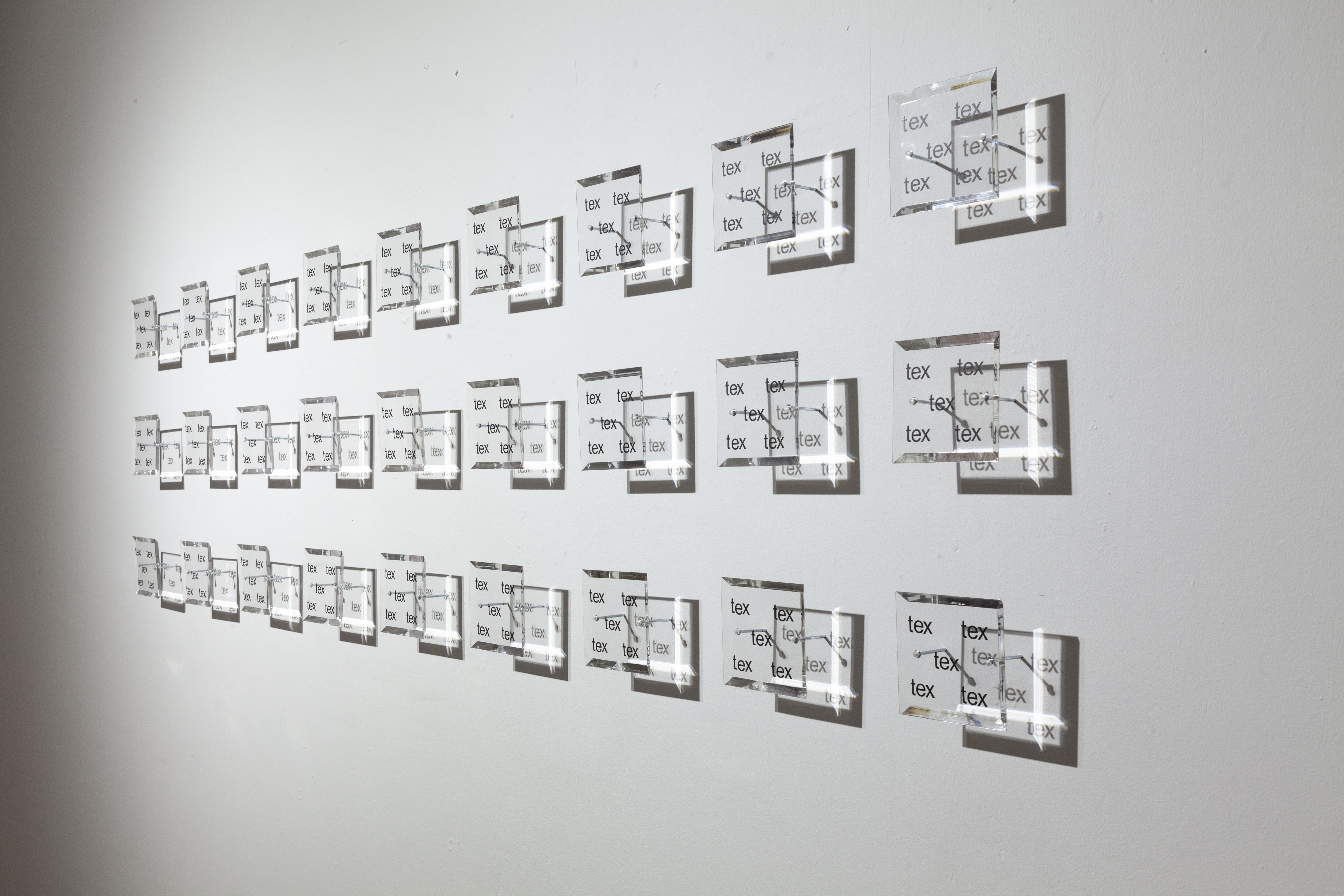
[tex]tiles 2015
One edition at the collection of Mark Rothko Art Museum, Latvia
Solo exhibition: Cut From The Same Cloth (yekparche), O Gallery, Tehran, Iran, 2020
Solo exhibition: Letters in Space, The National Centre for Contemporary Arts (NCCA), Kotlin Island (Kronstadt) - St Petersburg, Russia, 2017
Solo exhibition: Something There Was That Must Have Loved a Wall, Pi Artworks Gallery, Istanbul, 2016
Group exhibition: The Fortress Man, Mark Rothko Art Center, Daugavpils, Latvia, 2015-2016
Installation
Acrylic sheets, vinyl print, and nails
Dimensions: 160 x 48 x 5 cm
Words and text play an integral part in Farniyaz Zaker's art practice. She enjoys playing with, and drawing on the similarities between, text and textiles, to discover the language of textiles. In [tex]tiles 2015, she limited herself to a syllable and printed ‘tex’ – on tiles of acrylic glasses. Taken together, the written ‘tex’es add up to ‘tiles’ and make textiles. The repetition of ‘text’ is similar to the structure of knots in woven textiles. The same knot is repeating itself over and over again until it becomes a meaningful pattern. Furthermore, the shadow of the ‘tex’es and the tiles renders the surface behind them as textiles. The work invites the audience to read the words across the materials (tiles of acrylic glasses and the printed ‘tex’es on them). Therefore, her text-based installation not only invites the audience to make connections between texts and textiles, fabrics and walls, clothes and architecture but also bring awareness to the material dimensions of words.
Cut from the Same Cloth makes use of letters, words, patterns and decorative elements to question the juxtaposition of structure and ornament. Rather than separating one from the other, the show fuses ornament and structure and highlights their interdependence. High-rise-like sculptures such as “Khataee” and “Caryatid II” transform decorative floral patterns usually found in carpets and architectural moldings into structure itself. Elsewhere the artist merges syllables and words with objects and surfaces into artworks that can only be deciphered if their constituent parts are regarded as a unified whole, rather than separately as structure and ornament. Both “This Ornamentation Is What This [wall] Is Built For” as well as “tex[tiles]” interrupt the act of reading and invent a language that integrates letters with objects and surfaces to combine them into new types of signifiers. The messages that thus transpire speak of the synergy between the human urges to structure and to embellish our environment and of the unique capacity of textiles to accommodate both these urges.